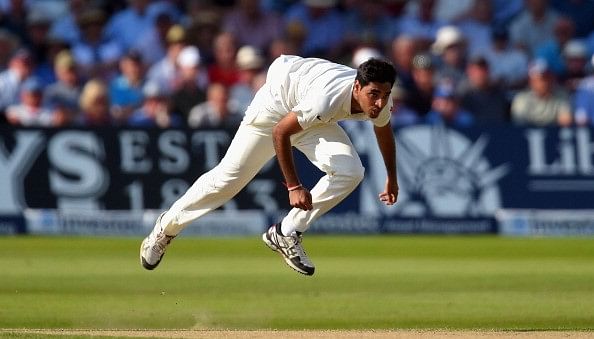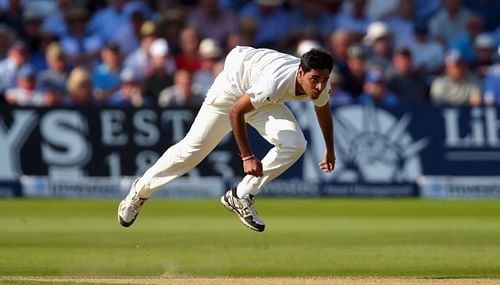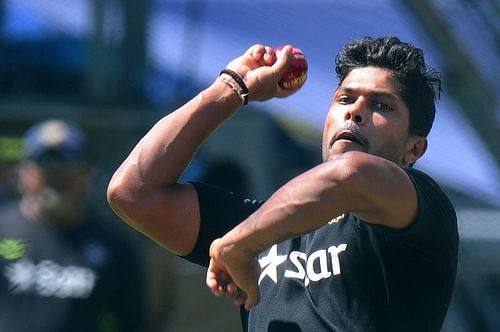
Why Bhuvneshwar Kumar and Umesh Yadav could have key roles to play against South Africa

After a month-long break, the Indian Cricket team will return to the ground on October 2nd to take on South Africa in a full-fledged series, consisting of three T20Is, five One-Day Internationals (ODIs) and five Tests.
Traditionally, the Indians have found it very hard to cope with the bounce and seam movement on South African pitches and it has been reflected in their five tours to the African nation. They have managed to win on just two occasions in the longer format of the game over those five tours.
Conversely, South Africa's performance, especially in Tests, on Indian soil has been very impressive. In their last two trips, in particular, the Proteas pace attack lead by the outstanding Dale Steyn and ably supported by the lanky Morne Morkel proved to be quite a handful for the Indians as they troubled the batsman with their pace and swing.
Bhuvneshwar Kumar – the unearthed vital cog
After a drawn first Test at Chennai, the teams moved to Ahmedabad for the second Test of the three-match series in 2008.
India opted to bat first, but Dale Steyn made full use of the grass that was present on the surface to record a five-wicket haul and bundle out the hosts for 76. The highlight of the spell being the ball that got rid of Rahul Dravid, which pitched on middle stump, moved enough to square the right-hander up and knocked his off-stump bail off the groove.
The spell played a massive role in the visitors’ triumph in the game.
If one has a look at the venues selected for the Test matches this time around, the conditions that would be most conducive for swing bowling would be the PCA stadium in Mohali.
Hence, this is where I feel India should include Bhuvaneshwar Kumar in their attack. In modern-day cricket today, there are several examples of bowlers looking to tuck up the batsman with their pace. Mitchell Starc, Mitchell Johnson, and Pat Cummins (when he remains injury-free) are some of them.
But there are very few bowlers who have the ability to swing the ball both ways and this is where Bhuvaneshwar can be quite a handful.
Ask any batsman – What is the ball that he is most afraid of getting out to? It's the full one which pitches in the area of uncertainty. the one they hate most, and then moves either in or out and creates an absolute confusion in his minds.
In the limited opportunities that he has got, Bhuvneshwar has shown that he can get the ball to talk and Virat Kohli must consider the option as a serious one on the eve of the opening test.
Swing bowlers are a dying breed and it is vital that India make good use of someone who can trouble opposition with the new ball in hand and put early pressure.
Can Umesh Yadav be the reverse swing exponent?

Cut now to the South Africa's tour to India in 2010. The opening Test in Nagpur saw the Proteas rack up a mammoth 558 for 6 after which Steyn took over.
India were 221 for 5 and after Tea on Day 3, the right-arm speedster started to reverse swing the old ball. On a pitch that seemed like an absolute batting beauty, Steyn was suddenly making things happen.
The dismissal that comes to my mind immediately when I remember the spell is the one that got rid of Wriddhiman Saha. The ball pitched on off stump and jagged back in so much that it ended up knocking back Saha's middle stump.
Classic reverse swing on display. Interestingly, in the dismissal, if you have a look at Steyn's wrist position at the point of release, it indicates that the ball should go away but instead it came back in and took the middle pole.
He finished with figures of 7 for 51 and paved the way for his side to take a 1-0 lead.
The two teams are scheduled to meet at the same venue for the third test and while Steyn and Co. will look to use that tactic once again, From an Indian perspective, I reckon Umesh Yadav could play a vital role on this surface.
He has got the pace and while, on occasions, he did go for runs in Sri Lanka, I firmly believe India must develop him into someone who could reverse the ball once it gets old. This would make him more lethal, with the batsmen not just having to counter his pace but the reverse-swinging ball as well.
While this South African team may not have someone like a Jacques Kallis, who was the rock for close to two decades, they do have in Hashim Amla, AB de Villiers, Faf du Plessis and JP Duminy a batting order that can still pose a stiff threat to the Indians.
The above factors and a lot of other factors will play a key role in deciding who comes up trumps in what promises to be an enthralling contest between bat and ball over the course of the next two months.